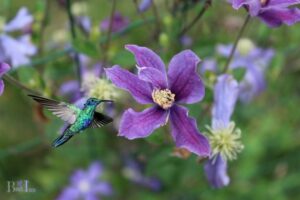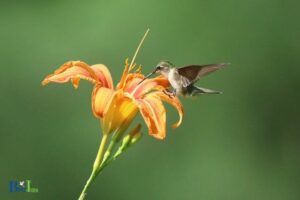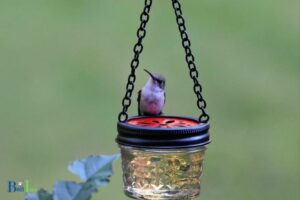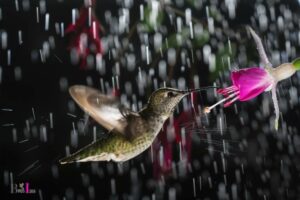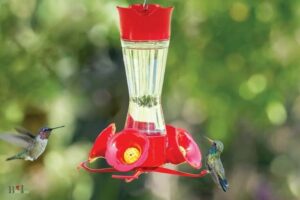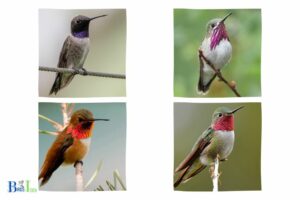What’s the Deal Hummingbird? Facts
Hummingbirds are small, nectar-eating birds found in the New World from Alaska to Tierra del Fuego. Their wings beat very quickly, allowing them to hover in mid-air and feed on flowers. They are well known for their bright colors and iridescent feathers.

Hummingbirds are truly amazing birds. Despite their small size, they are incredibly adept at flying and can reach impressive speeds when migrating between the northern and southern hemispheres.
Their bright colors and iridescent feathers also make them stand out among other birds.
DID YOU KNOW
Hummingbirds can consume up to eight times their body weight in food a day and flutter their wings up to 80 times per second.
What is the Habitat Range of Hummingbirds?
Hummingbirds are native to the Americas, ranging from Alaska in the north down to Tierra del Fuego in the south.

The Habitat range of hummingbirds includes:
- Deciduous and coniferous forests
- Woodlands
- Grassy meadows
- Suburban backyards
- Tropical rainforests
- High elevation montane areas
Hummingbirds are found from sea level to mountain elevations of over 4,000 meters. They are active during the day, and rest at night, often roosting in a sheltered area such as a tree hollow or dense foliage.
Hummingbirds migrate seasonally towards the equator and back, depending on the availability of food sources.
Big Deal Hummingbird
How Do Hummingbirds Hover and Fly?
Hummingbirds have a unique ability to hover and fly in any direction they choose. This is because they have the ability to flap their wings at an incredibly high rate of speed.

- Hummingbirds flap their wings at up to 200 beats per second
- They use this high rate of flapping to generate lift, allowing them to hover and fly in any direction for short bursts of time
- They also use their tail feathers to help them maneuver and change direction quickly
- By changing the angle of their wings and body, hummingbirds can move up, down, and sideways
- Their wings also provide them with the ability to fly backwards and even upside down for short periods of time
Hummingbirds are one of the most impressive birds when it comes to the art of hovering and flying. By flapping their wings at an incredibly high rate, they are able to generate lift and maneuver in any direction with ease.
Their unique ability to fly in any direction, hover, and perform stunts make them a delight to watch, and is a feat that no other bird can perform.
What Are the Physical Characteristics of Hummingbirds?
Hummingbirds are small birds known for their unique ability to hover and fly in any direction. They are also known for their bright and colorful feathers.

Physical characteristics of hummingbirds include:
Tiny size: Hummingbirds are the smallest of all birds, some species being only 2.5 inches long.
Long, thin beak: The beak of hummingbirds is long and thin, designed to sip nectar from flowers.
Long, pointed wings: Hummingbirds have long, pointed wings that allow them to hover and fly in any direction.
Colorful feathers: Hummingbirds have brilliantly colored feathers, usually in shades of yellow, blue, green and red.
Fast metabolism: Hummingbirds have a very fast metabolism, allowing them to burn calories quickly and stay in the air for long periods of time.
In addition to their physical characteristics, hummingbirds have many unique behavior traits that make them fascinating to watch. These behaviors include singing, displaying, and building nests.
“The hummingbird represents a powerful symbol of joy and playfulness and has the ability to remain in perpetual happiness.”
birdsidea
What Is the Migratory Pattern of Hummingbirds?
Hummingbirds are some of the most amazing birds in the world, known for their remarkable abilities to fly long distances and their beautiful colors. They are migratory birds, meaning they travel long distances to different areas in order to better survive the changing seasons.
The migratory pattern of hummingbirds depends on the species and where they live. Generally, most hummingbirds will fly south for the winter, where it is warmer and food is more plentiful.

In the spring, they will fly back north, where the weather is cooler and there are more blooming flowers for them to feed on.
Below is a list of some of the migratory patterns for different species of hummingbirds:
Allen’s Hummingbird: This species flies from its breeding grounds in California and Oregon to southern Mexico for the winter.
Anna’s Hummingbird: This bird breeds in California and will fly south to Mexico and parts of Central America for the winter.
Rufous Hummingbird: This species breeds in Alaska and Northwestern Canada and will fly south to Mexico and the U.S. Pacific Coast in the winter.
Ruby-throated Hummingbird: This species breeds in eastern North America and will fly south to parts of Central America and the Caribbean in the winter.
Hummingbirds are truly amazing birds, and their migratory patterns show just how far they can travel and how well-adapted they are to their changing environments.
How Do Hummingbirds Use Their Colors and Patters for Thermoregulation?
Hummingbirds use their bright colors and patterns to regulate their body temperature. This process is called thermoregulation.
This helps them to survive in different climates and weather conditions. The bright colors and patterns of hummingbirds allow them to absorb and release heat more efficiently. This helps them maintain a stable body temperature during cold nights and hot days.
The bright colors of hummingbirds also serve as a form of communication. They use their bright colors to attract potential mates and ward off predators.

Bullet point list:
- Hummingbirds use bright colors and patterns for thermoregulation
- This helps them to survive in varying climates
- The bright colors and patterns allow them to absorb and release heat more efficiently
- The bright colors also serve as a form of communication
- These colors help to attract potential mates and ward off predators
How Do Nectar Sources Affect Hummingbird Populations?
Nectar sources, such as flowers and feeders, provide a crucial source of food and energy for hummingbirds. As a result, their availability affects the size and health of hummingbird populations.

In conclusion, the availability and variety of nectar sources play an important role in influencing the size and health of hummingbird populations.
What Are Some Threats to Hummingbirds?
Threats to hummingbirds can come from different sources, such as habitat destruction, pesticides, and climate change.

Some of the common threats to hummingbirds include:
Habitat Destruction:
The destruction of the habitat of hummingbirds can be caused by deforestation, urban development, and farming. This can lead to the loss of nesting sites and food sources for hummingbirds.
Pesticides:
Pesticides can be harmful to hummingbirds, as they can poison the nectar that hummingbirds drink.
Climate Change:
Climate change can cause fluctuations in temperature and humidity, which can affect the availability of resources that hummingbirds rely on, such as nectar and insects.
Predation:
Hummingbirds are vulnerable to predation by larger birds and animals.
Disease:
Disease can also be a threat to hummingbird populations, as they can be spread through nectar and insects.
It is important to be aware of these threats to hummingbirds and take steps to protect their habitats and resources.
This can include planting native plants that provide food and habitat for hummingbirds, minimizing the use of pesticides, and supporting conservation efforts to protect hummingbird habitats.
FAQ
What is the Hummingbird Deal?
Who is the Hummingbird Deal for?
What kind of performances does the Hummingbird Deal offer?
Is the Hummingbird Deal free?
How do I access the Hummingbird Deal?
Conclusion
Hummingbirds are amazingly skillful birds, with incredible speed and agility in the air and spectacular colouring on their feathers.
Their unique abilities to feed on nectar while hovering in midair makes them instantly recognizable and there are many opportunities to witness them in the wild in the New World.

